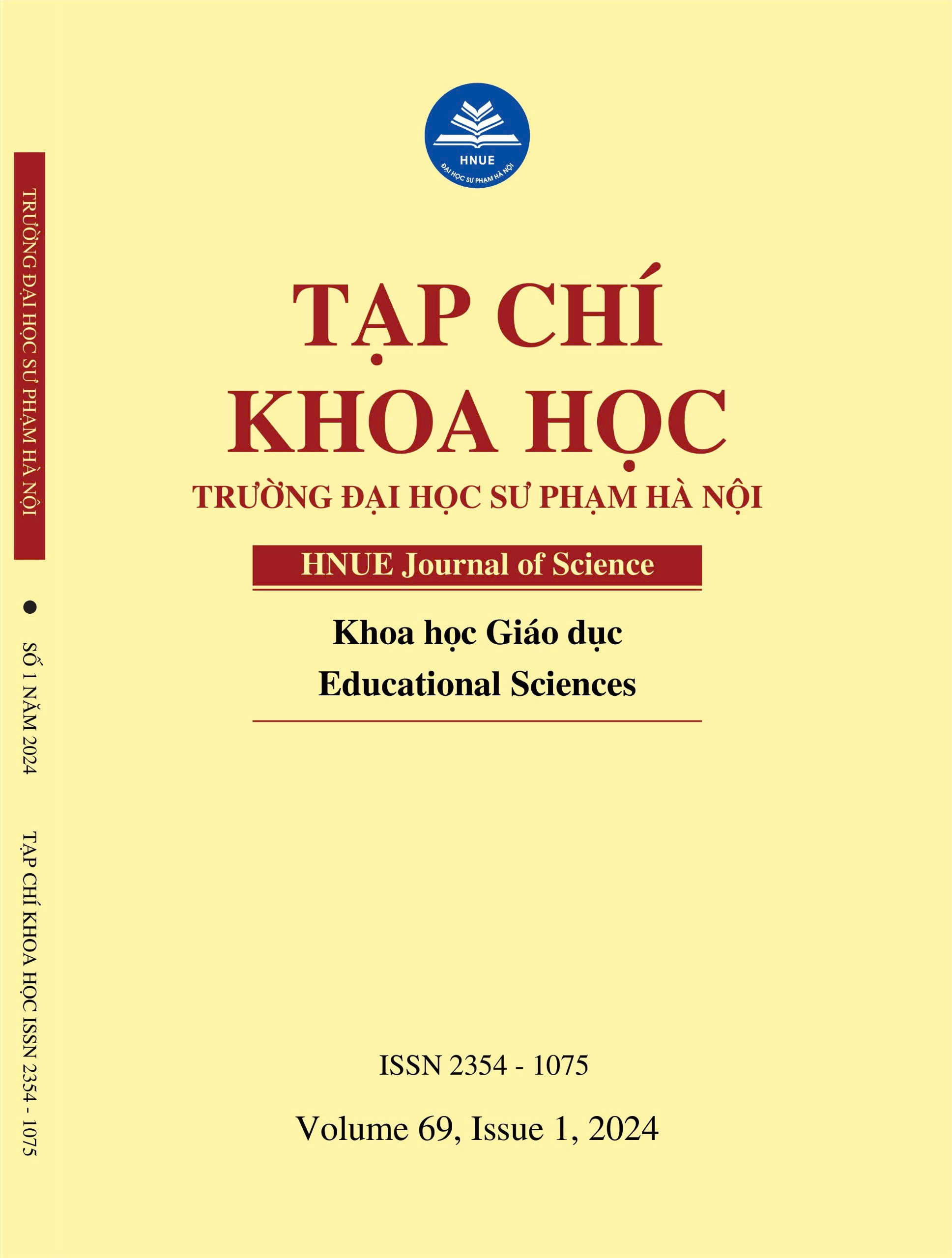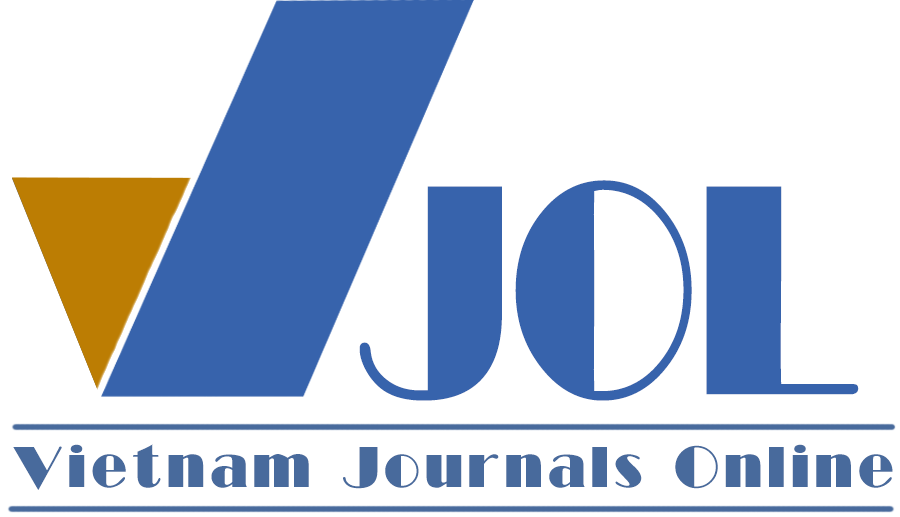IMPROVING THE EFFECTIVENESS OF USING GROUP DISCUSSION METHOD IN TEACHING AND LEARNING OF THE HISTORY OF THE COMMUNIST PARTY OF VIETNAM CURRICULUM
DOI:
https://doi.org/10.18173/2354-1075.2024-0004Keywords:
Group discussion method, students, History of the Communist Party of Vietnam, Hanoi National University of EducationAbstract
Using appropriate teaching methods to improve students’ learning results is important in universities. This study points out measures to improve the effectiveness of group discussion methods in teaching and learning the History of the Communist Party of Vietnam curriculum at Hanoi National University of Education. The quantitative paradigm was used, through which an experimental design was applied to the experimental group. Convenience sampling was used to collect 383 students in the experimental group and 187 students in the control group. The data was collected by using pre- and post-test examinations, and a validated questionnaire. The results showed that the group discussion method improved students' interests and learning outcomes. The lecturer had the main role in controlling the group discussion while the students were still the center of the group discussion. The students were encouraged and properly directed to participate in group discussions by dividing the class into small groups (8-10 students/group) discussing the same topic; informing students in advance about the discussion topic; correcting the students’ presentation of their opinions in class; helping the students form ideas during the discussion; and bringing out discussion topics close to the students' preferred choices
Downloads
References
[1] Masunah, J., Dyani, P. L., Gaffar, V., & Sari, M., 2022. Production of Shadow Puppet Performances in Building Artistic Entrepreneurship. Journal of Sustainable Tourism and Entrepreneurship, 3(2, 89–100. https://doi.org/10.35912/joste.v3i2.1221.
[2] Fernández, E, et al., 2022. In the Beginning, There were Dragon(cillo)s: Using Shadow Puppetry to Engage Young Audiences. Open Library of Humanities, 8(1): 3, pp. 1–20. DOI: https://doi.org/10.16995/olh.4791.
[3] Liu, J., 2018. Chinese Shadow Puppetry: Shifting from the Traditional to the Modern. IISUniv.J.A. Vol.4(1), 25-45.
[4] Gruber, C. (Ed.)., 2019. The Image Debate: Figural Representation in Islam and Across the World. Gingko. https://doi.org/10.2307/j.ctv1wmz3m6.
[5] Sulaksono, D., & Sadhhono, K., 2019. Ecological Messages in The Ramayana Story of The Wayang Purwa Shadow-Puppet Play. Lekesan: Interdisciplinary Journal of Asia Pacific Arts, 2(1), p. 1-7.
[6] Ramli, W.N., & Lugiman, F., 2012. The Contribution of Shadow Puppet's Show through Engaging Social Communication in Modern Society. Procedia - Social and Behavioral Sciences, 35, 353-360. https://doi.org/10.1016/j.sbspro.2012.02.098
[7] Pramono, Y.L., Suyanto, S., & Wahida, A., 2017. Shadow puppet arts as the formation of young generation characters. Proceedings of 2nd International Conference of Arts Language and Culture, p.397-404.
[8] Shih, J., & Chiu, F., 2020. The Transformation of Taiwanese Shadow Puppet Images and Its Application to Zero-waste Fashion Clothing. Advances in Social Science, Education and Humanities Research, volume 416, p.220-224.
[9] Gray, P., Rule, A.C., Gentzsch, A., & Tallakson, D.A., 2016. Shadow Puppet Plays in Elementary Science Methods Class Help Preservice Teachers Learn about Minority Scientists. Journal of STEM Arts, Craft, and Constructions, Volume 1, Number 1, p.27-45
[10] STEM Learning, 2019. Making Shadow Puppets. Truy cập ngày 12/01/2023 tại https://www.stem.org.uk/resources/elibrary/resource/35265/making-shadow-puppets.
[11] Ocal, E., Karademir, A., Saatcioglu, O., & Demirel, B., 2021. Preschool teachers’ preparation programs: The use of puppetry for early childhood science education. International Journal of Educational Methodology, 7(2), 305-318. https://doi.org/10.12973/ijem.7.2.305.
[12] Vân VT, 2020. Phát triển tình cảm xã hội cho trẻ mẫu giáo 5-6 tuổi thông qua nghệ thuật múa rối nước. Kỷ yếu Hội thảo Kkhoa học Cán bộ trẻ các trường Đại học Sư phạm toàn quốc lần thứ VIII - năm 2020, ISBN:978-604-974-704-5, tr. tr 768-778.
[13] Creswell, J. W., & Creswell, J. D., 2017. Research Design: Qualitative, Quantitative, and Mixed Methods Approaches. Sage Publications.
[14] Trường Đại học Sư phạm, Đại học Huế, 2018; 2021, Chương trình đào tạo trình độ Đại học ngành Giáo dục Mầm non. Truy cập ngày 12/01/2023 tại http://www.dhsphue.edu.vn/cd_cmk.aspx?cd=41&id=0.
[15] Warmbrod, J.R., 2014. Reporting and Interpreting Scores Derived from Likert-type Scales. Journal of Agricultural Education, 55(5), 30-47. doi: 10.5032/jae.
[16] Beth Osnes, 2010. The shadow puppet theatre of Malaysia: A study of Wayang Kulit with performance scripts and puppet designs. McFarland.







